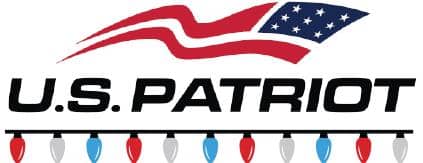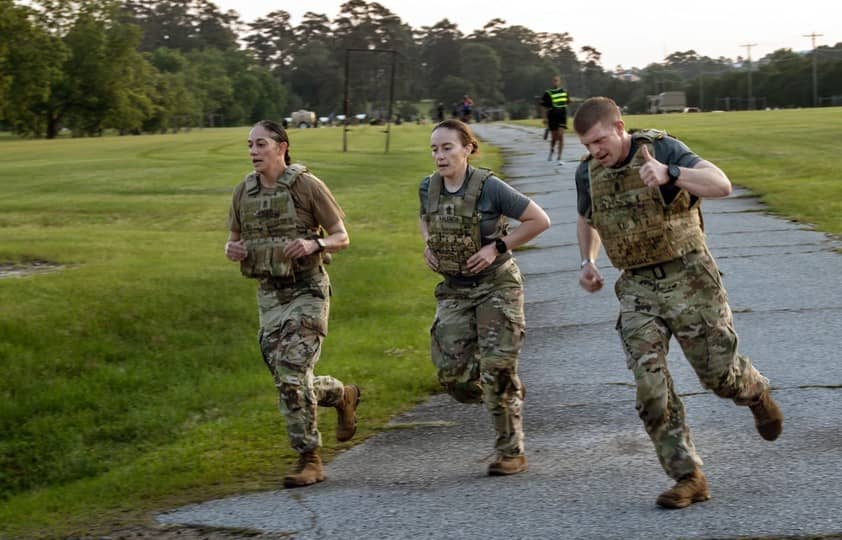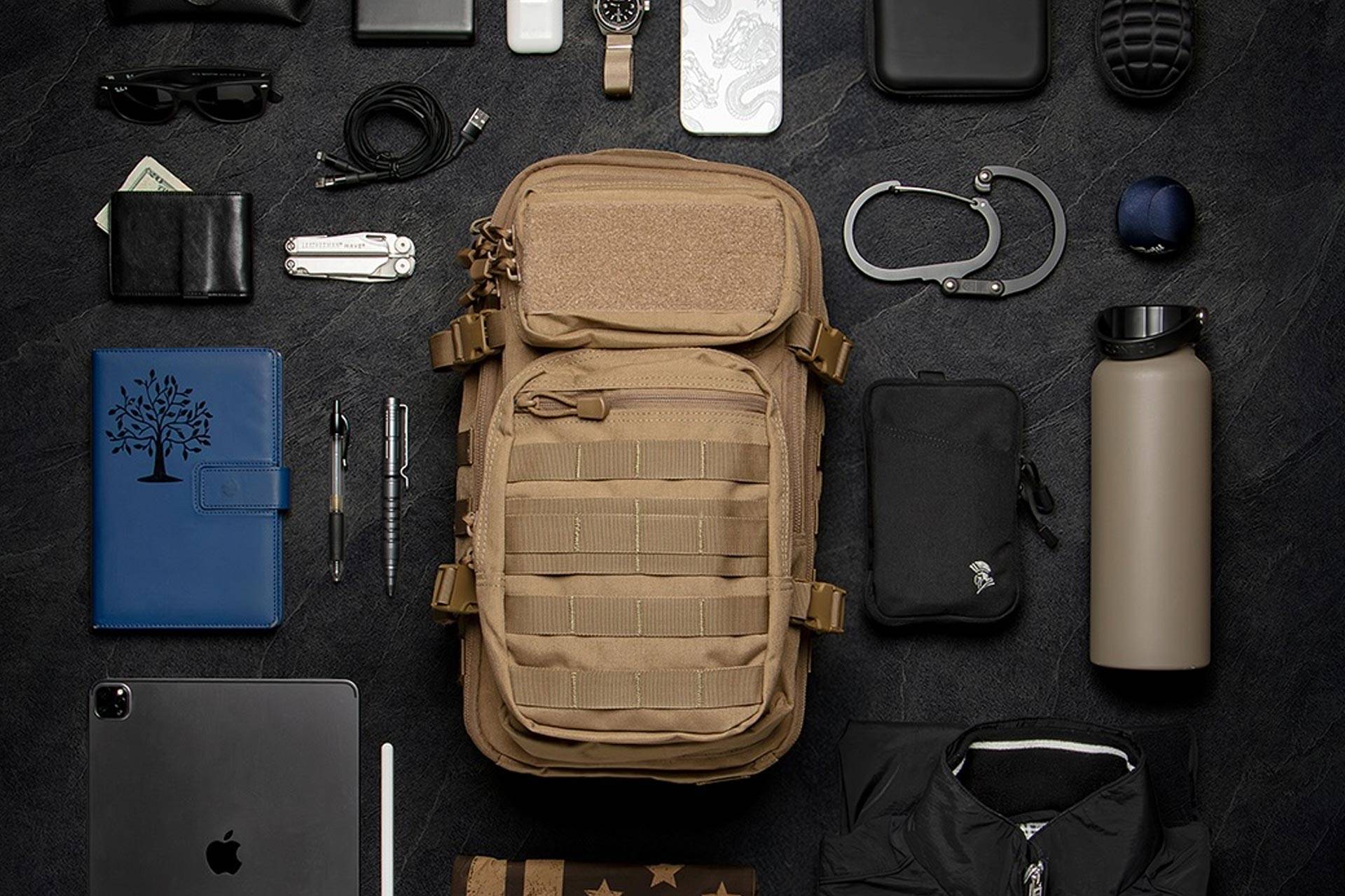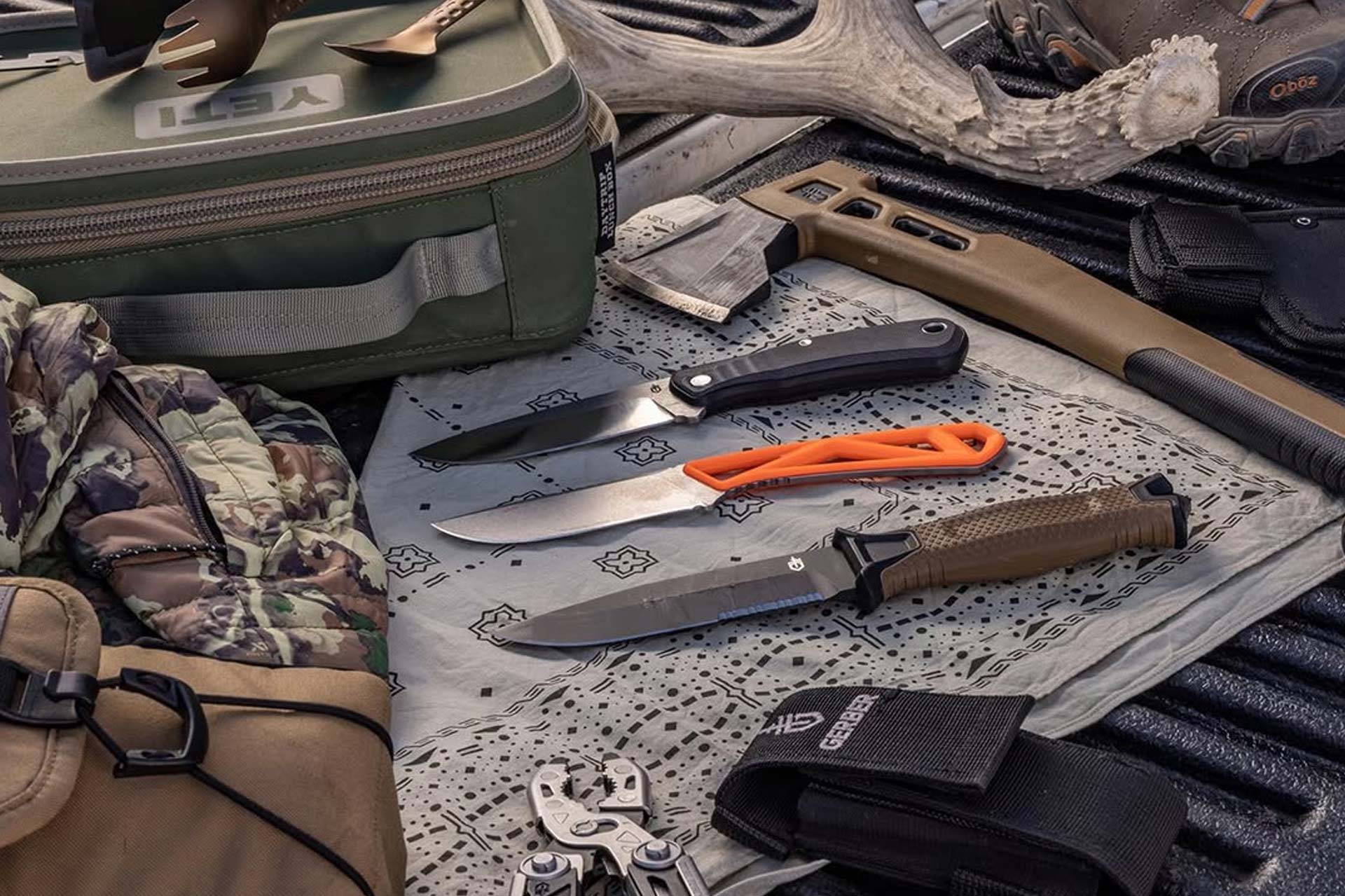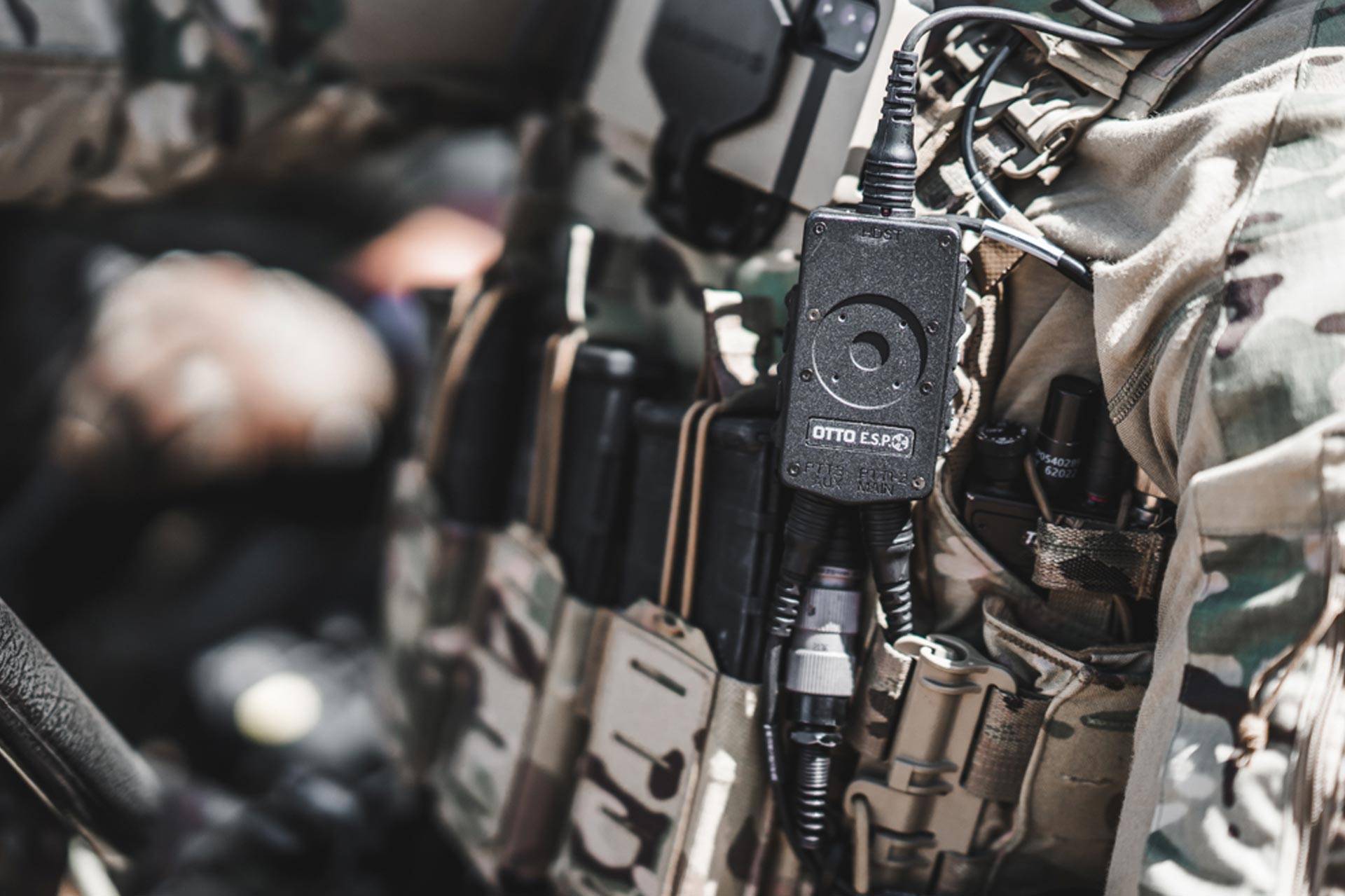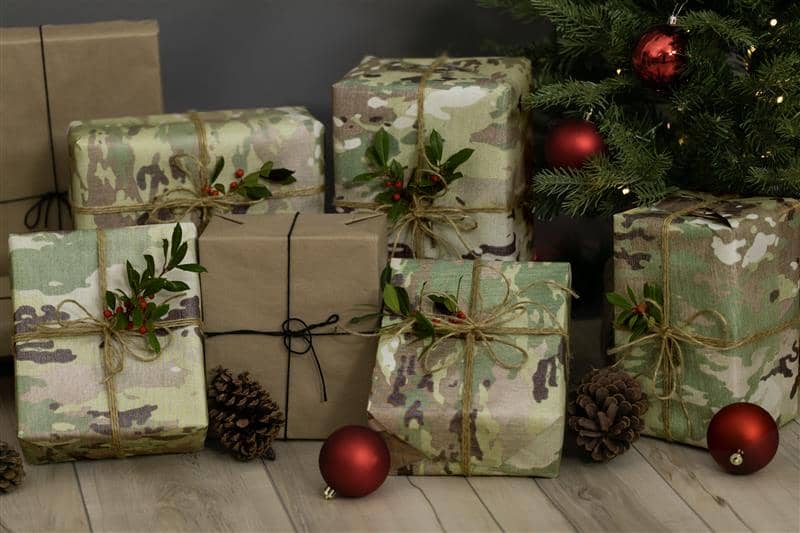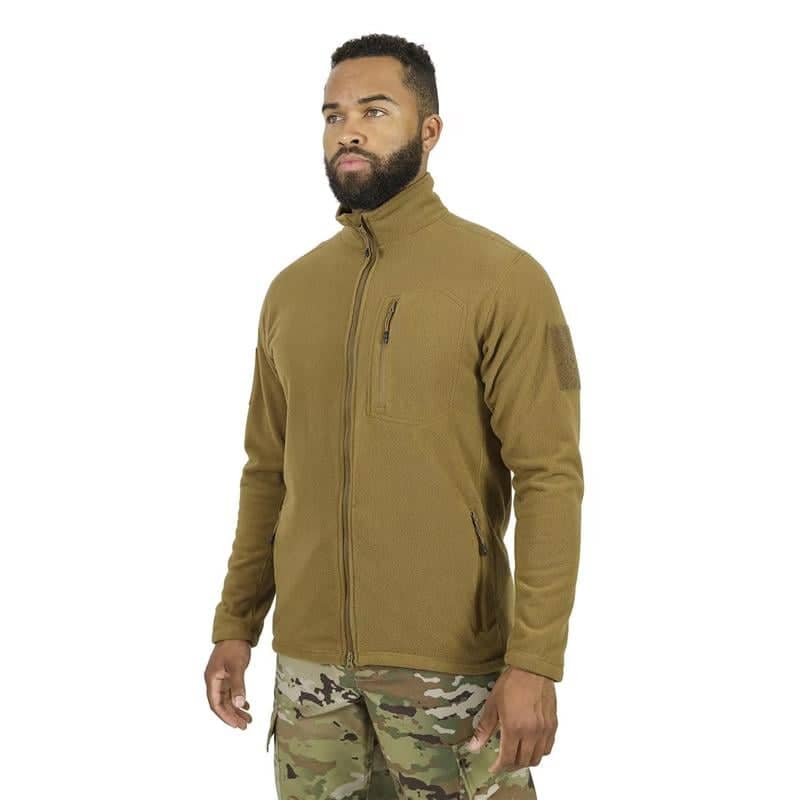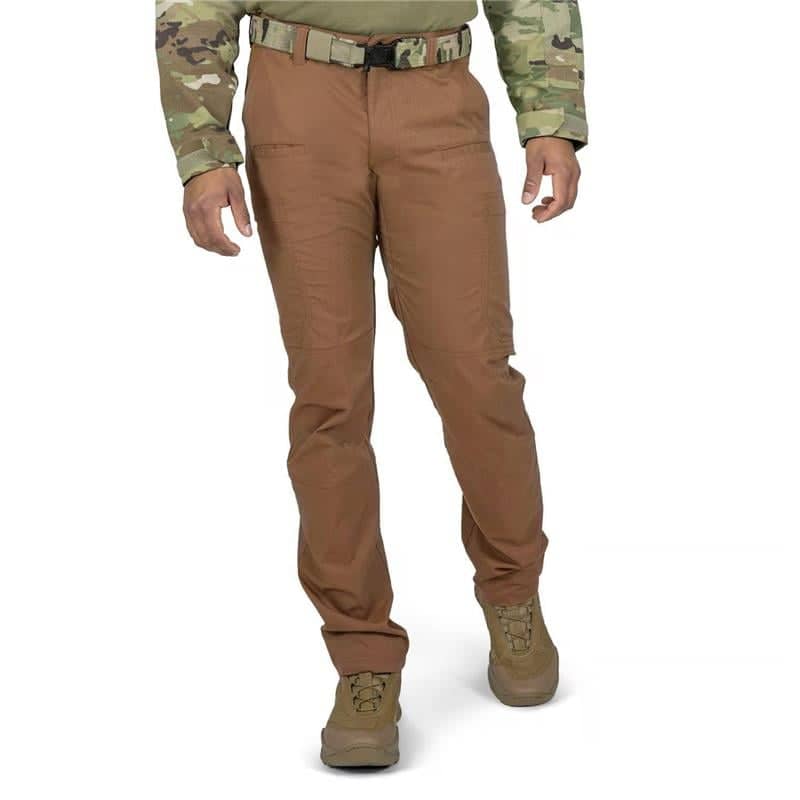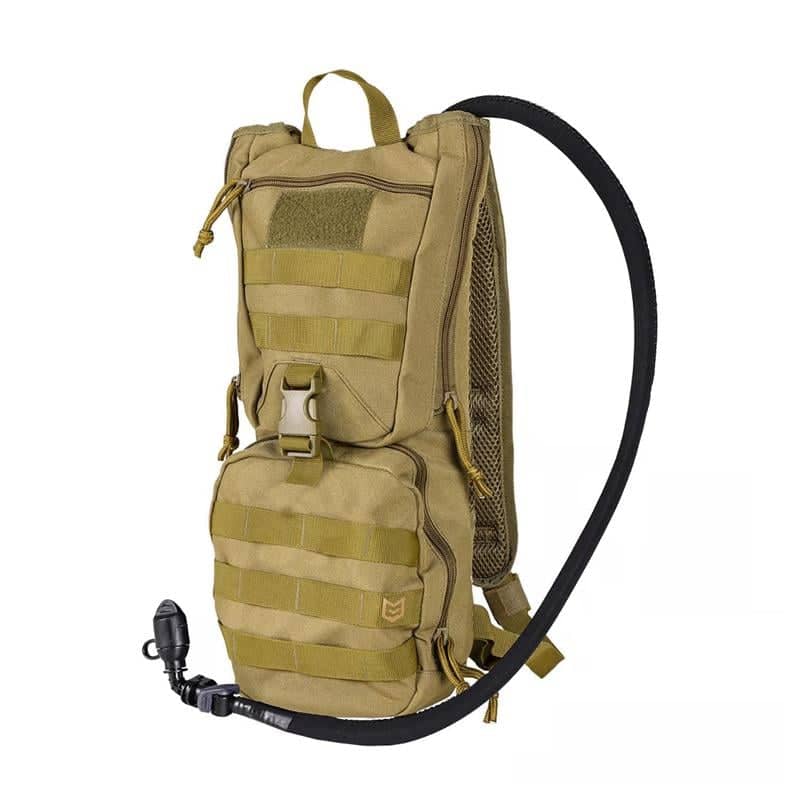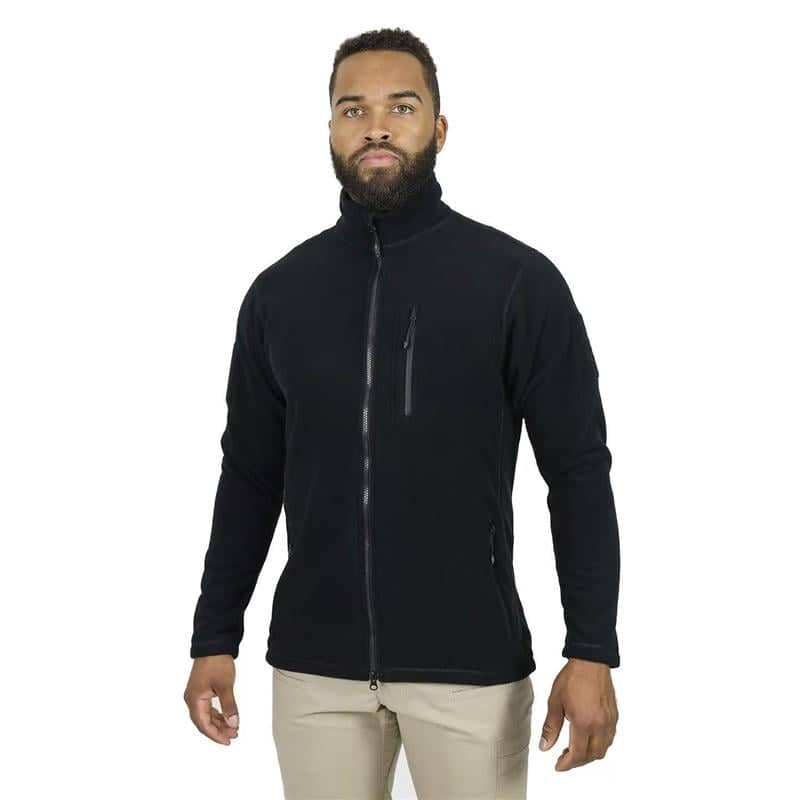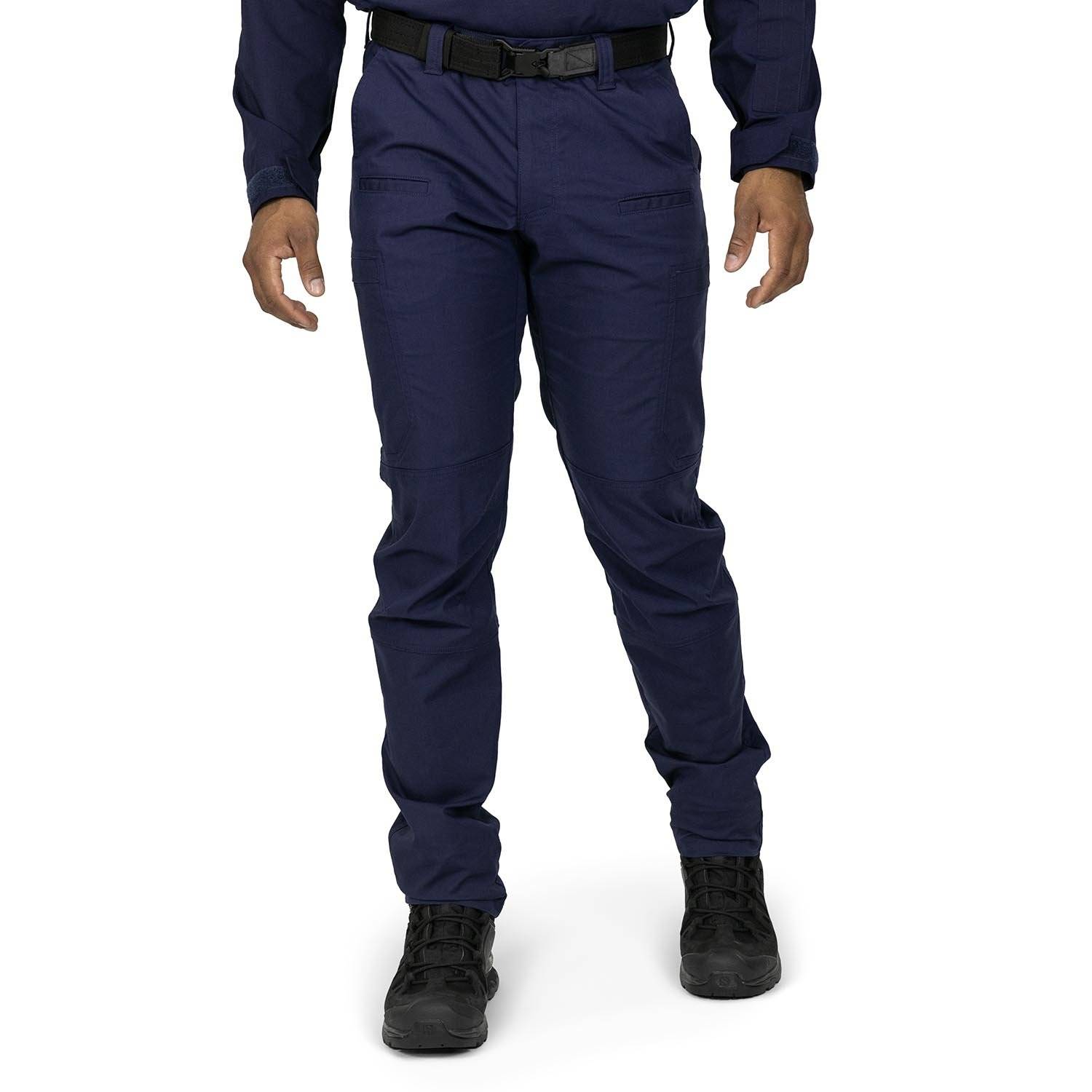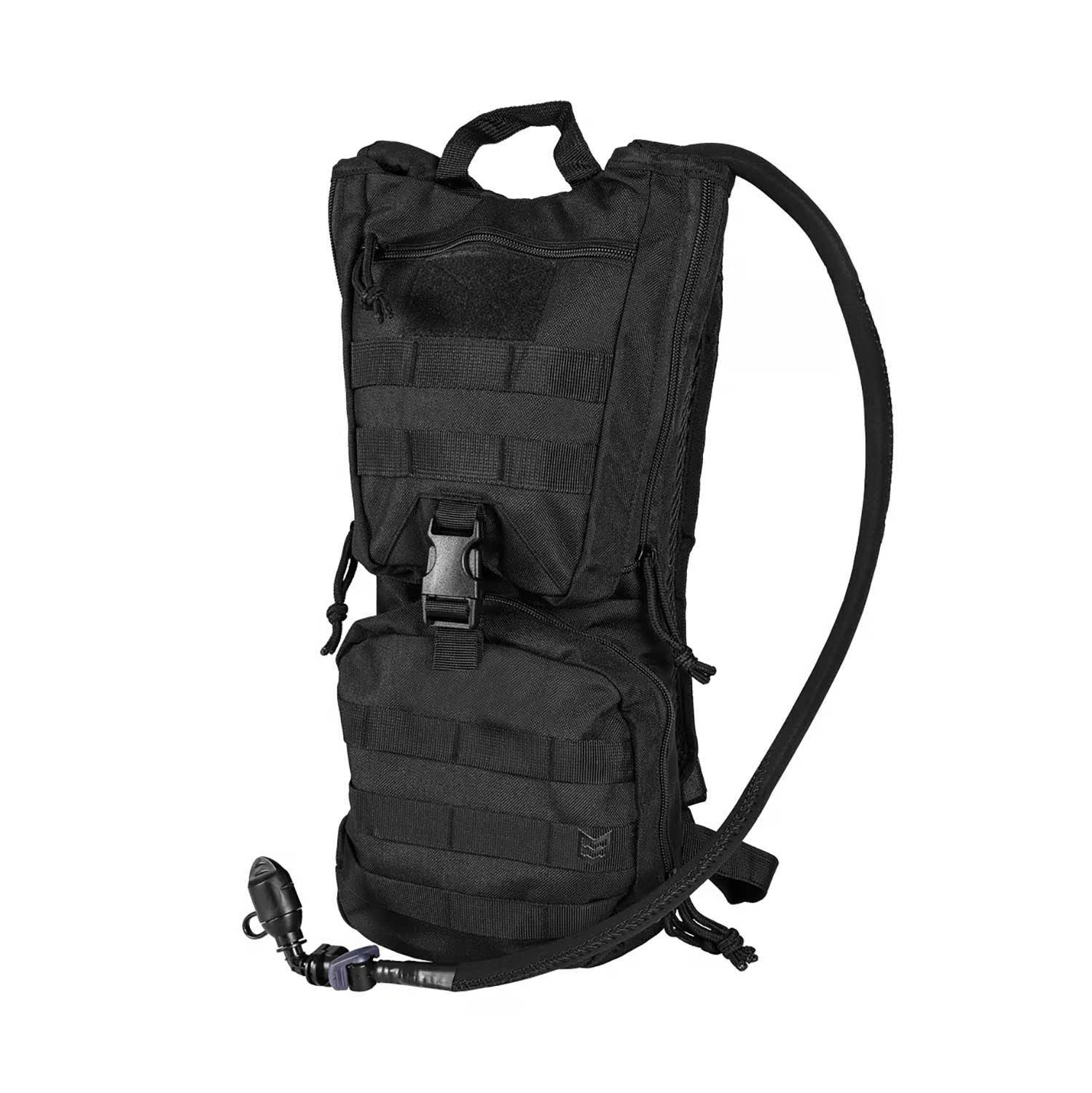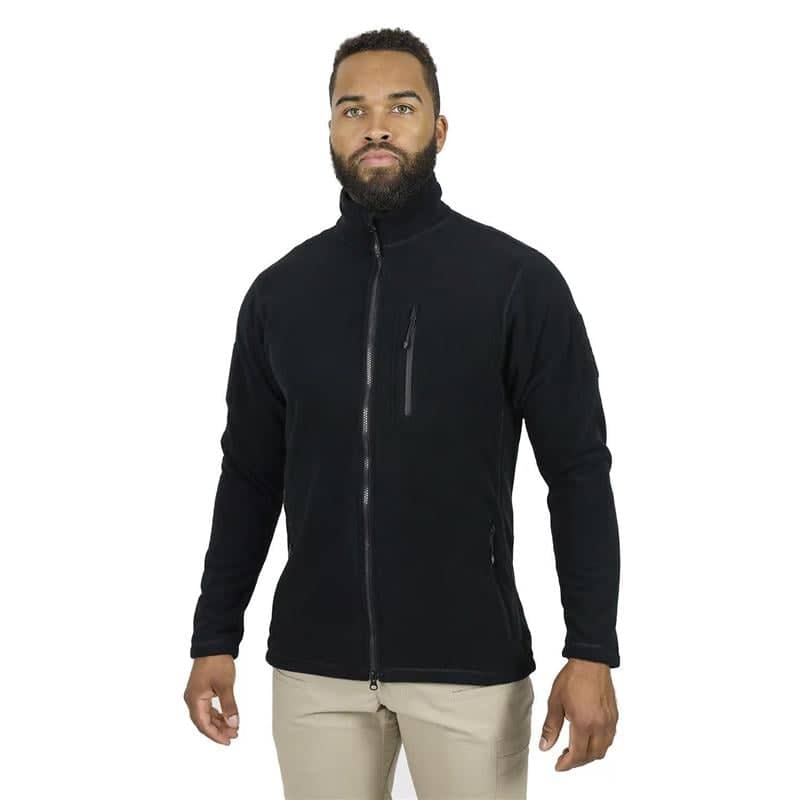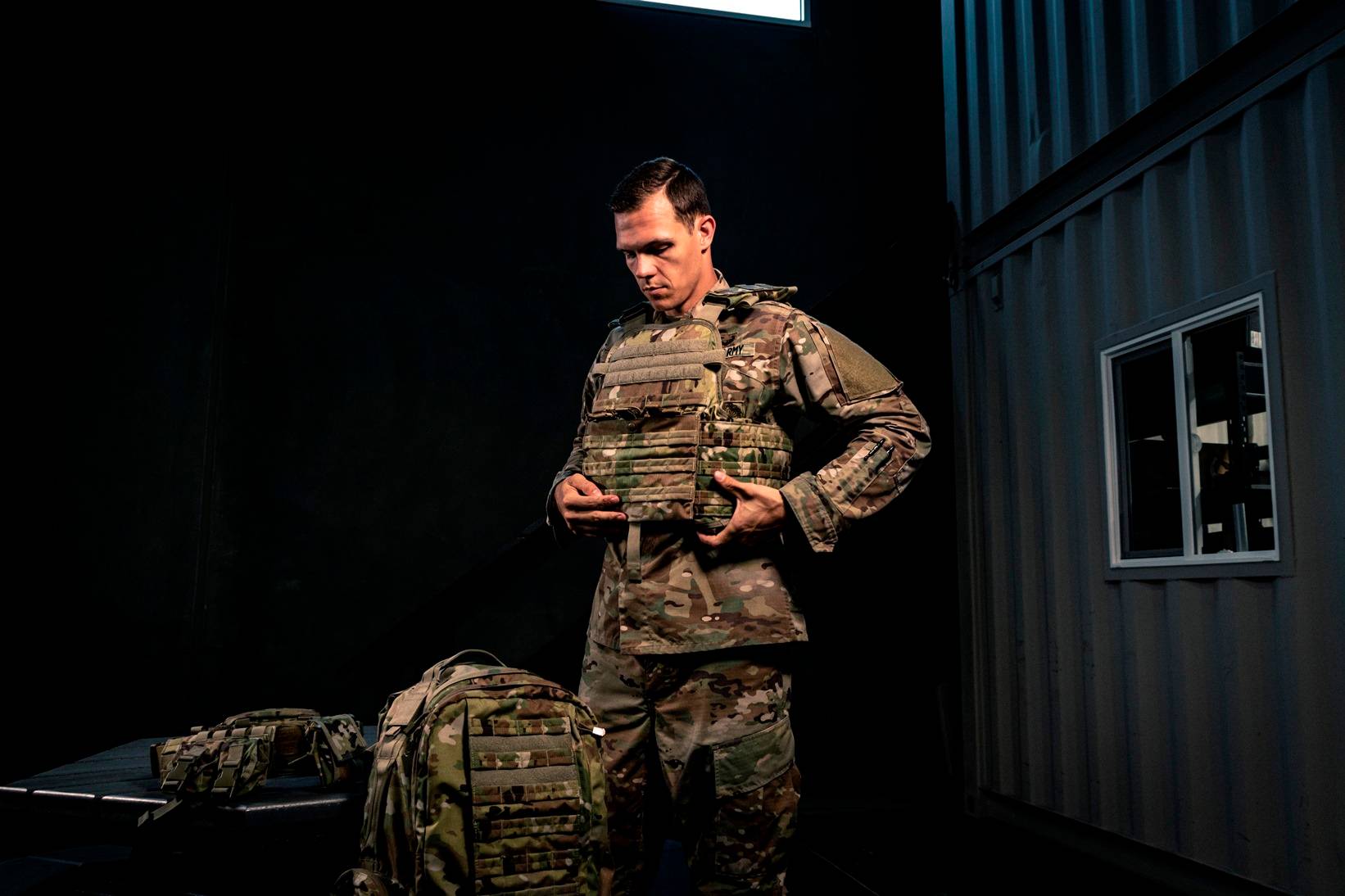
Best Plate Carriers of 2025


If your job involves a non-zero chance of getting shot at, then your plate carrier is one of your most important pieces of gear. Your plate carrier should be an extension of you; it Nylon is one of the most durable fabrics around, and Cordura nylon is especially popular in military and police products for its exceptional toughness. It’s on the heavy side, though.
- Ripstop nylon is a blend of nylon and some other fabric—usually polyester. It’s markedly lighter than Cordura nylon but not quite as resistant to tearing and abrasion.
- Canvas was a popular choice for plate carriers for decades, but it is less commonly used today because it’s been outclassed in many respects by modern nylon blends. Even so, it may be worth considering; it’s stronger and more durable than most other natural fabrics, and it’s relatively inexpensive. It is rather heavy, though.
- CSM and TPU are rubber-like materials that are flexible and water-resistant. Both are reasonably resistant to abrasion and tearing but susceptible to punctures. Rarely (if ever) will you see a plate carrier made wholly from these materials, but they may be used to cover or reinforce certain areas, especially on plate carriers designed for naval operations.
- Some plate carriers incorporate Kevlar weave, especially in extra-high-stress areas like the shoulder straps, side panels, and front/back panels. Used in small quantities, Kevlar adds an impressive amount of durability with only a minimal increase in weight.
As an Army veteran (combat medic) and a 3-gun/IDPA competitive shooter, I can testify to the huge range of differences between various models and styles of plate carriers. These differences—from the sizes and types of compatible plates to the material from which the carrier itself is made—can dramatically impact your mission readiness for better or worse, and careful research is required.
The best plate carrier for you isn’t necessarily the best one for someone else, so in this guide, we’ve collected a range of different models for different body types, plate types, and use cases. We’ve evaluated each plate carrier with five factors in mind: weight, durability, modularity, comfort, and affordability.
How to Choose the Right Plate Carrier
Plate carriers are widely used by military personnel, police, hobbyists, and fitness enthusiasts, and each sort of person has very different needs. This guide will focus primarily on military applications, but we’ll touch on key considerations for other users, too.
Total Weight
Weight is, unsurprisingly, a major factor in most cases. Most plate carriers can accommodate both front and back plates, and many accept side plates as well, either by integrated or removable inserts. The extra pounds from side plates can add up quickly, though, especially if they’re made of steel. Here are the approximate weight ranges of different types of plates:
Ceramic or composite front/back plates: 4.5 to 8 pounds each
Ceramic or composite side plates: 2 to 6 pounds each
Steel front/back plates: 7 to 11 pounds each
Steel side plates: 3 to 8 pounds each
As you can see, you’re looking at a total plate weight of anywhere from 9 pounds (ceramic/composite, front and back only) to a whopping 38 pounds (steel; front, back, and sides). Our general recommendation is to buy a plate carrier with integrated side plate inserts (often called a “cummerbund”) if you think you’re at least somewhat likely to need them, or to buy an open-sided carrier that is compatible with removable side plate inserts if you aren’t sure.
The total weight of your plate carrier has significant effects on your mobility and stamina, and these effects generally do not compound linearly. That is to say: Carrying 45 pounds on your torso isn’t 1.5x more taxing than carrying 30 pounds; for most people, it’s closer to 2x, as measured by the amount of time for which the wearer is able to continuously perform moderately intense aerobic exercise. Carrying more than 60 pounds on your torso for hours at a time requires considerable strength and stamina (and it’s not hard to hit or exceed 60 pounds, once you factor in your plate carrier, your primary weapon, extra ammunition, a radio, a hydration pack, and a loaded rucksack).
Heat, ventilation, and total gear capacity are important considerations as well. Open-sided plate carriers may not protect your sides, but they do offer superior airflow and regulation of body temperature—especially important in hot, arid climates. Cummerbunds also often come with additional gear pockets for small items and/or MOLLE panels.
Material and Build Quality
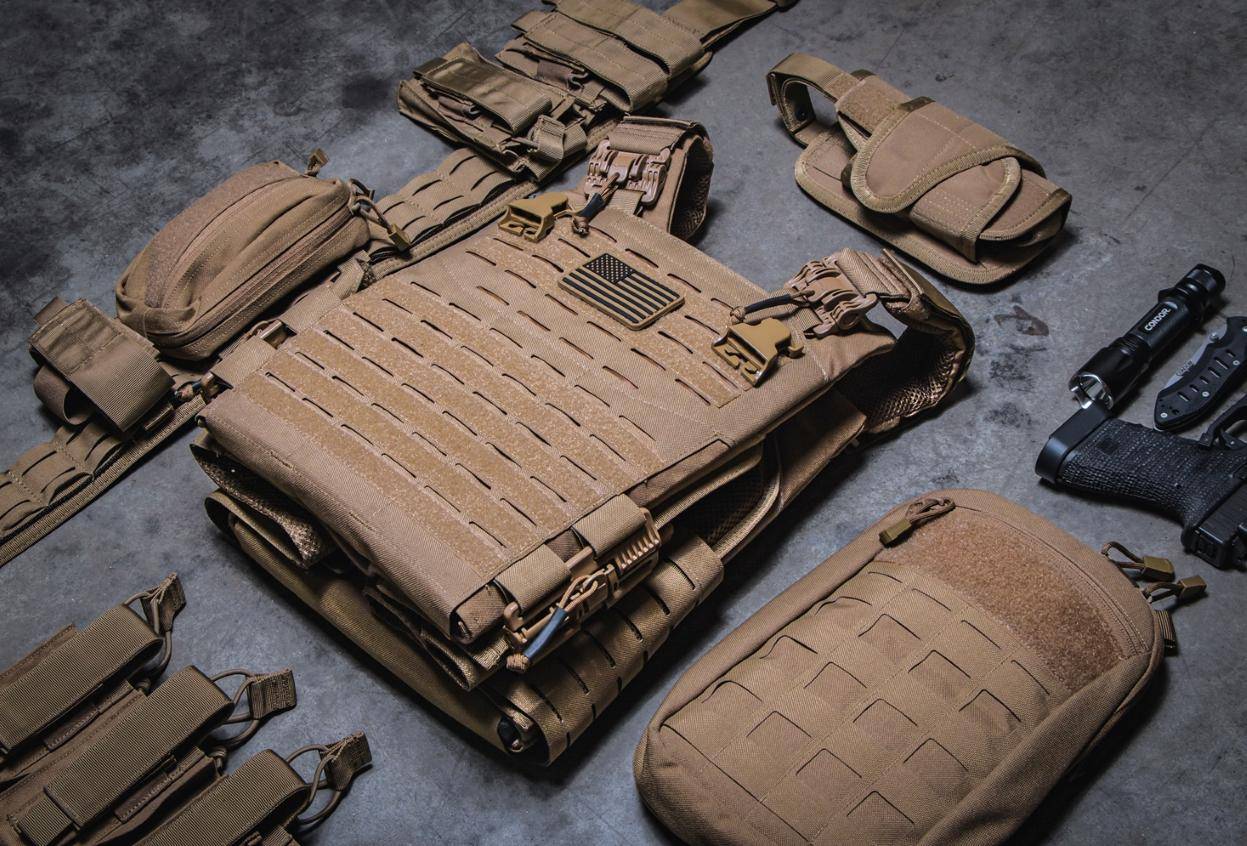
Your plate carrier is one of your most critical pieces of gear, so durability should be one of your top priorities regardless of your other needs. (Even if you only wear a plate carrier for strength training, you certainly don’t want it tearing such that a 20-pound plate falls on your foot.)
Most plate carriers are made from Cordura nylon, ripstop nylon, canvas, CSM/TPU (chlorosulfonated polyethylene/thermoplastic polyurethane), Kevlar, or some combination of these. As with most things, each has pros and cons.
If we were to make one general recommendation, it would be Cordura nylon. Although it’s more expensive than most other plate carrier materials, the price difference is rarely huge, and we think Cordura’s excellent durability justifies its weight in most cases.
Comfort and Fit
It’s pretty obvious that your plate carrier should be comfortable for extended wear (or as comfortable as a 30- or 40-pound suit of armor can be, anyway). Less obvious but even more important is the extent to which an ill-fitting plate carrier is less able to protect you from injury.
A plate carrier that is too large can:
Sit too low and/or too loosely on your torso, exposing your upper chest (your heart and lungs) to projectiles or bladed weapons
Shift excessively during movement, throwing off your balance and making it more difficult to make fast, precise movements under fire
Fail to retain your gear properly
Cause or worsen back and neck pain over time, especially if the weight of your gear is also distributed unevenly
A plate carrier that is too small can:
Ride too high on your torso, exposing your waistline or stomach
Restrict your breathing, blood flow, mobility, and flexibility
Impede quick access to gear, especially on your sides
Cause additional muscle strain and general discomfort, either of which can reduce your combat readiness
Proper fit is essential; your plate carrier should fit snugly but not tightly, and it should keep your armor plates firmly in place no matter how you bend or move. It should also be tall and wide enough to completely cover all of your vital organs.
Modularity
Many (if not most) plate carriers are designed with some degree of customizability in mind. However, the extent to which modularity is important to you will depend largely on your specific needs.
Combat demands the highest possible degree of adaptability in every sense of the word, so a high degree of plate carrier customizability/modularity is essential for police and military personnel.
For competition and sport shooters, modularity is generally important to some extent but not indispensable. Most shooting sport leagues mandate specific gear configurations, so you shouldn’t need to rearrange your plate carrier very often.
Those who use plate carriers primarily for strength training generally don’t need too much in this respect; the carrier is mostly just for extra weight. However, you may want a few modular pouches or pockets for your phone and water bottle depending on your workout
Best Plate Carriers in 2025
Here are our top five picks for the best plate carriers on the market in 2025. Each is designed with a different set of needs in mind, so hopefully, one of these will fit the bill for you (or at least point you in
the right direction). Consider your mission and how each of these plate carriers fit the bill.
Best Plate Carier Overall: Agilite K-19
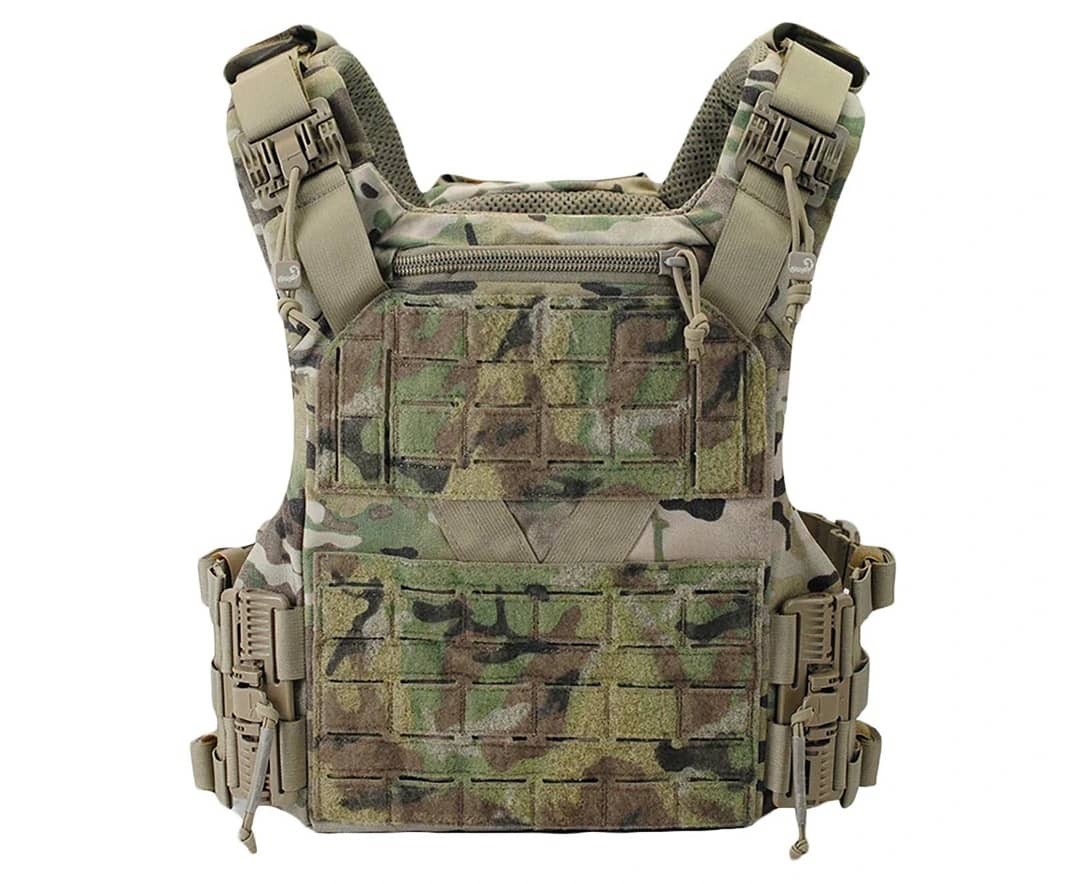
Military and law enforcement personnel who need a solid, all-around plate carrier for any conceivable combat situation should seriously consider the Agilite K-19. Striking an admirable balance between comfort, modularity, and durability, it’s good across the board without rising to excellence or falling to mediocrity in any one respect. Notable features include a removable cummerbund, a quick-release buckle system for fast doffing, and 1000D Cordura construction (the strongest standard Cordura blend available—some specialized blends are even stronger, but they’re also considerably more expensive). The front and rear panels accommodate any SAPI or ESAPI plate up to 10” x 12” x 1.5”. If you prefer a balanced approach to plate carrier design and would rather not have to weigh major tradeoffs, it’s hard to go wrong with the Agilite K-19.
Best Lightweight Plate Carrier: Agilite K-Zero
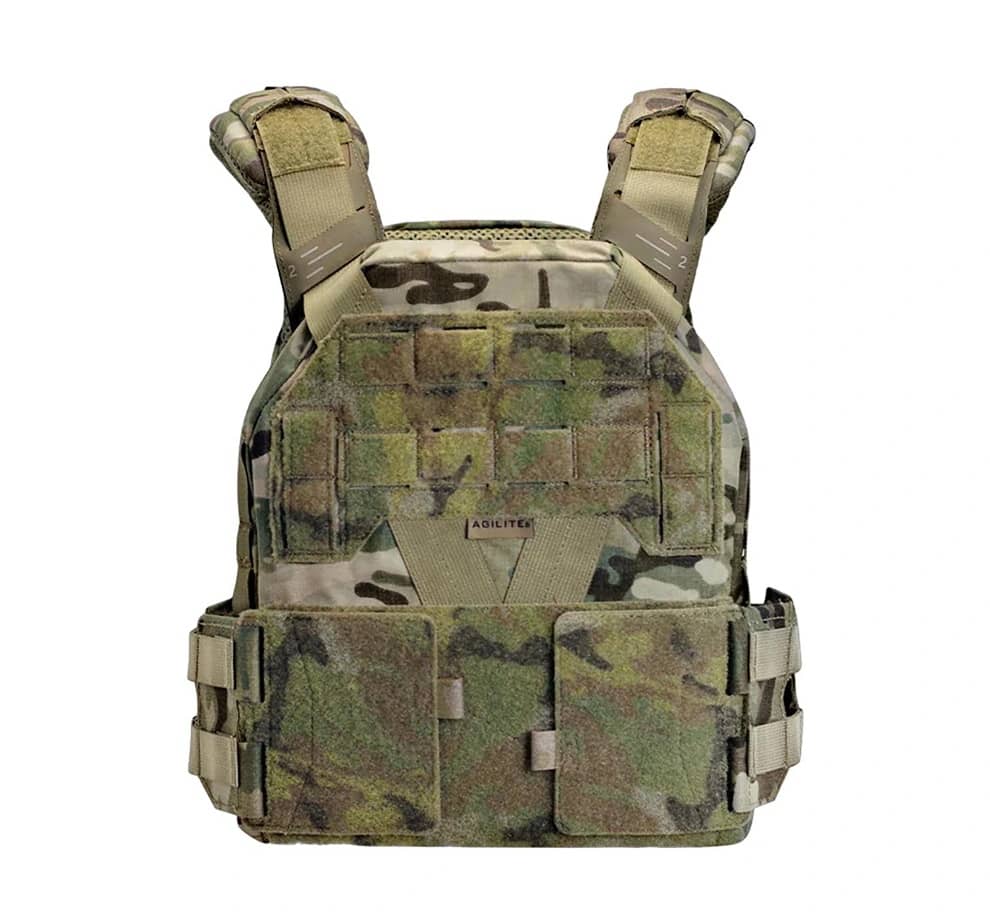
In some cases, nothing is more important than comfort and mobility. The K-Zero weighs in at just 1.7 pounds empty, and it is, of course, designed under the assumption that you’ll be running lightweight ceramic or composite plates. (If you need large SAPI plates, be sure to buy the large version of the K-Zero—the standard size won’t fit the bigger plates.) The aggressive V-cut design is ideal for shooter or swimmer plates, making this plate carrier a top contender for those who need maximum freedom of movement in their arms and shoulders. If you expect extra-long missions in the field, or if your top priorities are speed, mobility, and fatigue reduction, then the lightweight K-Zero is for you.
Best Plate Carrier for Strength Training: Crye Precision JPC 2.0
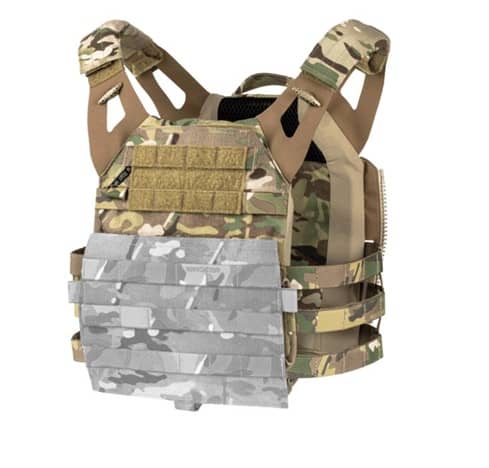
“Jumpable” plate carriers are so named because they are designed to allow the wearer maximum freedom of movement, including jumping and climbing (both of which are increasingly hard to do once your carrier starts to exceed 20 pounds or so). The Crye Precision JPC 2.0’s low-profile design holds the plates tightly against the body and sacrifices modularity in the name of simplicity. It can be well-suited to certain kinds of combat operations—namely, precisely targeted offensive strikes wherein operators intend to avoid direct enemy contact as much as possible. In most other cases, we recommend the JPC 2.0 only for strength training purposes. Its main drawback is that supported plate sizes are tied directly to the size of the carrier itself; the small carrier only supports small plates, and so on. This means that, if you’re short but strong, you may not be able to add as much weight to the vest as you’d like.
Best Full-Coverage Plate Carrier: Shellback Rampage 2.0
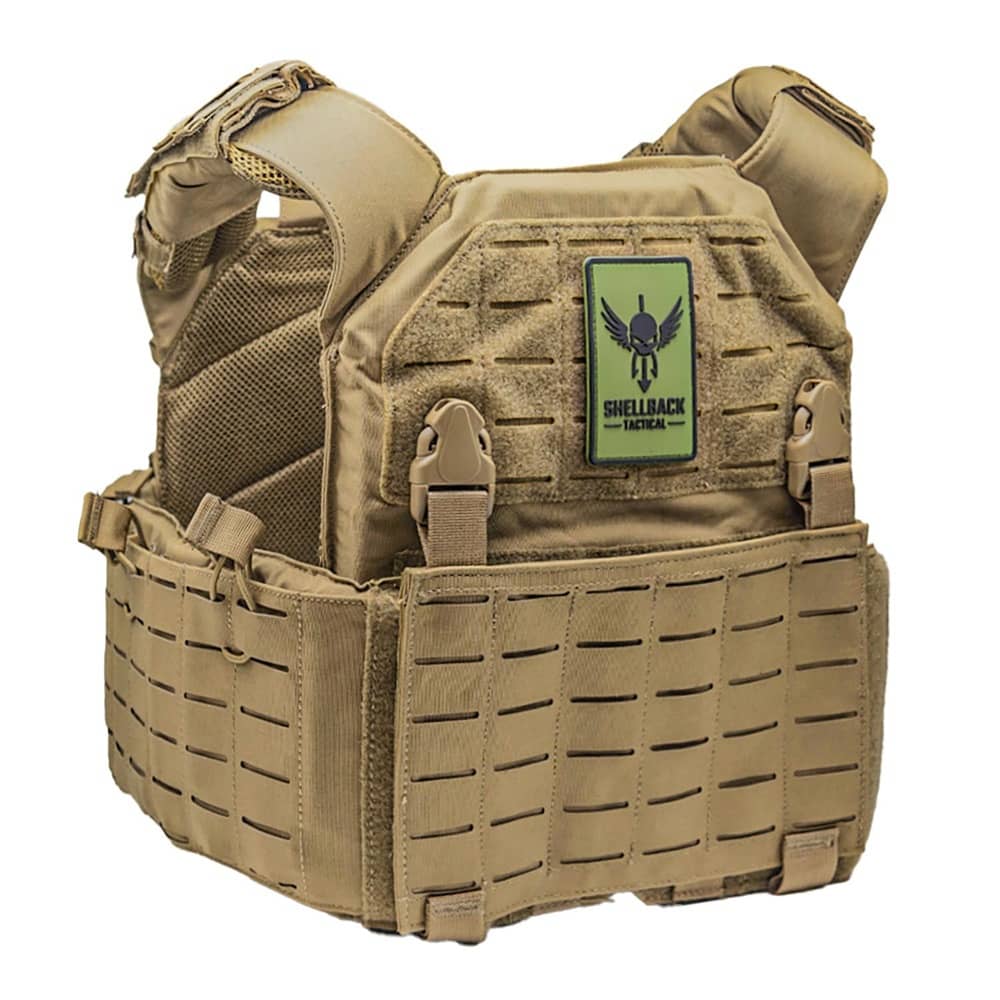
When I was in basic training, my drill sergeant liked to say: “Don’t get shot, but if you must get shot, at least don’t get shot a lot.” The Shellback Rampage 2.0 plate carrier is for operators who are at increased risk of getting shot a lot. Designed for full coverage of all vital areas, it also emphasizes modularity and total gear capacity, boasting 36 MOLLE attachment points (12 on the front panel, 12 on the rear panel, and 6 on each side of the cummerbund). It’s made of 500D Cordura nylon, It goes without saying that strength, stamina, and weight management are key if you go with the Rampage; an overloaded plate carrier can seriously endanger you and your allies in combat, so please be sure to train accordingly.
Best Budget-Friendly Plate Carrier: Condor Modular Operator Gen II
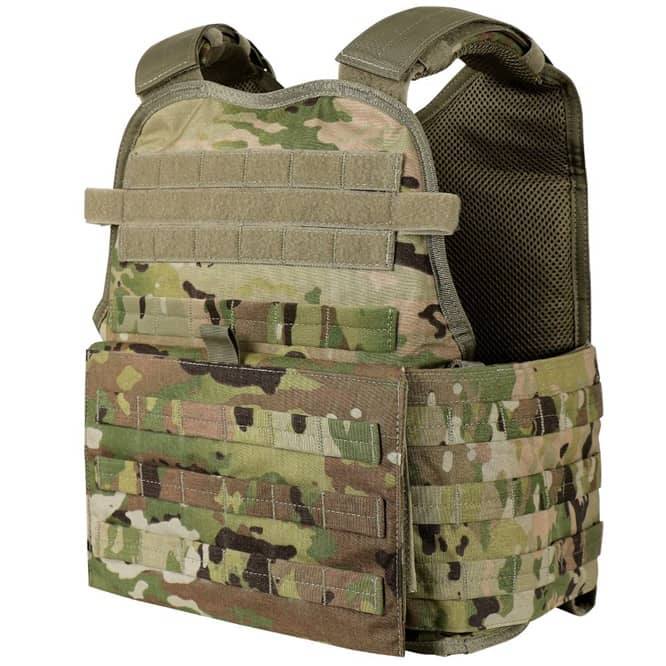
Not everyone has hundreds of dollars to drop on a plate carrier. If you’re looking for a solid introductory model that won’t break the bank, consider the Condor Modular Operator Gen II. Its basic, no-frills design emphasizes a wide range of plate compatibility and decent MOLLE support while not concerning itself with much else. We do have some concerns about the durability of both the shoulder straps and the stitching, but these shortcomings are forgivable in light of the fact that this is an entry-level plate carrier not designed for extended use in combat. If nothing else, the Modular Operator Gen II is great for experimentation so that you can get a clear idea of what’s most important to you by the time you’re ready to upgrade.
Honorable Mentions
These two plate carriers didn’t quite make our top five, but it was pretty close, and we think they at least deserve a quick hat tip.
The Shellback Skirmish is, overall, a step up from the Condor Modular Operator Gen II in terms of both price and overall quality. It’s lightweight, too—only a few ounces heavier than the Agilite K-Zero.
If the Shellback Rampage 2.0 just isn’t heavy-duty enough for you, consider the Shellback Tactical Banshee Elite 3.0. This thing is a beast in every respect: thick, heavy, extra-large, and ultra-tough. It’s the most expensive carrier on this list by far, but Andre-the-Giant types are likely to find that it’s worth every penny.
***
In a very real sense, your plate carrier is your closest battle buddy. It’ll be there for you when you most need it, and it might even save your life one day—but only if you take the time to carefully choose one well-suited to your body type and needs. If you’re ready to buy—or even if you just have more questions—our team at U.S. Patriot Tactical is here to help.


